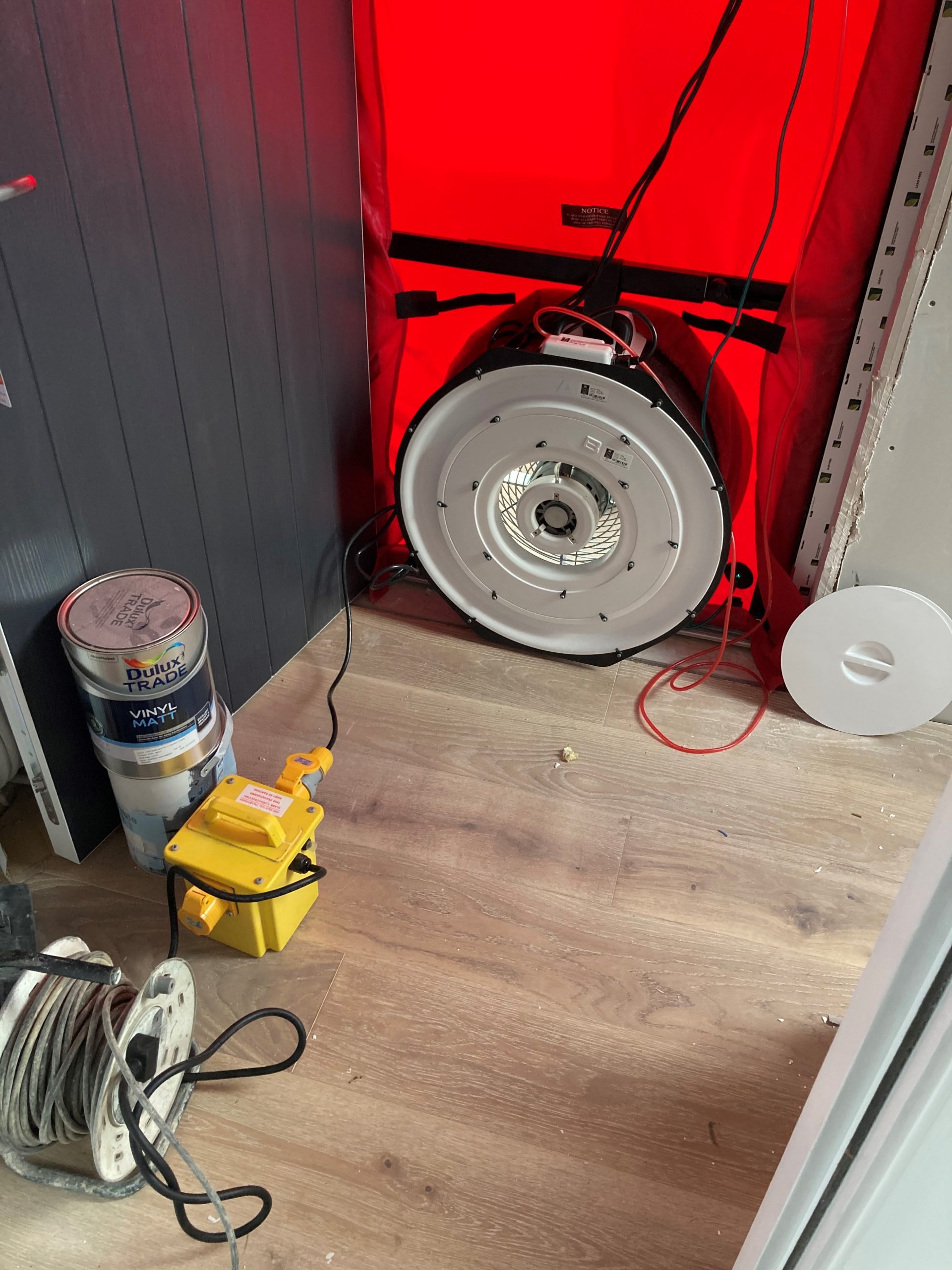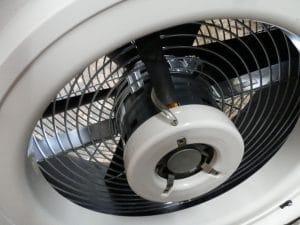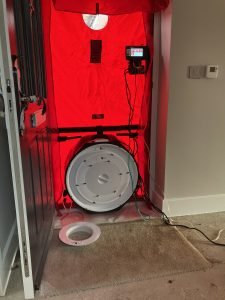Air tightness is an important aspect of any energy efficient building development. But, there’s a lot of uncertainty to what an air tightness test is. We will explain in more detail in the blog.
Air tightness tests are a crucial part of the Building Regulations. When building your dwelling (or even renovating), air tightness tests are a super important aspect that needs to be implemented into your development plan. However, there’s still A LOT of uncertainty around them.
So, what is an air tightness test? As part of the government’s building regulations, air tightness testing was created to measure the amount of air that escapes through the gaps or fabrics of buildings and find solutions on how to combat the leakage.
You may be wondering why you need an air tightness test; is it not just an extra burden on your construction project? The truth is that air tightness tests are an integral part of your building plan and a great way to contribute towards a greener home. We’ll be debunking any uncertainties in this latest blog.
What is an air tightness test?
Air tightness testing, also known as air pressure testing, is a requirement for all new domestic and non-domestic builds in the UK. It was introduced alongside the Building Regulations law to ensure high standards of our building’s air tightness, helping to lower running costs, implement higher standards of materials, prevent uncomfortable drafts for occupants and avoid future condensation problems.
Unfortunately, gaps and cracks within builds where air is escaping are not easily detectable through a visual inspection and this is where air tightness testing comes in. In simple terms, a pressure test is carried out to measure and identify the air leakage through entire buildings.
But, what is the end goal of air tightness testing? Once a building is tested and air tightness quality begins to improve, the building’s environmental impact will begin to decrease as well as the price of energy bills. That gets a huge tick from us!
RELATED: AIR TIGHTNESS TESTING | THE WHAT, THE WHEN, THE HOW
Why do we have air tightness tests?
Air tightness tests are important in finding the energy efficiency of a new building and identifying the poor build quality within new developments. As the government begins to introduce tougher regulations, building designs now have to consider airtightness early in the construction process to make sure they are compliant with regulations. Like we say, design is so important.
Let’s give you an example. If a property has an air permeability rating over 10m3/h/m2 at 50pa, then the house will fail the test due to a huge amount of uncontrolled air leakage. This can lead to:
- Unwanted heat loss
- Discomfort for occupants such as cold homes
- Increased heating bills to counter the cold
- Greater CO2 emissions due to the additional heating needs.
Overall, we need air tightness to help maintain a high level of Air Tightness within a building as this helps with the energy performance. Air coming in and out can lead to poor energy efficiency and air testing is necessary to make sure a building is environmentally friendly as possible whilst reducing the cost of energy bills for the occupant at the same time.
How do I know if I need an air tightness test?
Air tests are typically needed once a residential or commercial building has been constructed. According to Building Regulations, there’s certain properties that require a air tightness test:
- New build residential properties and ones over a certain size (500 m2) must require an air tightness test before being sold.
- Small developments of one or two properties that are built exactly the same must have one of the buildings undergo testing. However, it’s important to keep in mind that if the properties are of different construction, both must be tested separately.
- With larger developments, a proportion of the building must be tested. This depends on the size and construction of the build.
It is good to note that typically, you do not need an air test for extensions, existing dwellings or conversion projects. However, if you are trying to improve your thermal performance, air testing can be a good benchmark and diagnostic tool.
When do I need to take an air tightness test?
Essentially, your build must be complete before you have your air test performed. You will also need a SAP score as this will set a target for the air test. However, you can still employ the support of an energy adviser from the start of your designs so you can ensure your properties comply with air tightness testing regulations. This will save you some money later down the line!
If you are targeting an extremely energy efficient building or PassivHaus, then we would recommend you undertake at least two air tests. One when the shell of the building is complete and then one at the end of the project. This will help you to ensure the building is performing as targeted!
RELATED: WHEN IS THE RIGHT TIME TO GET AN AIR TIGHTNESS TEST?
Does Buildpass carry out air tightness tests?
Of course! We are proud to be experienced testers and members of the Air Tightness Testing and Measuring Association (ATTMA). We like to think we are pros. If you’d like to find out more about Air Tightness Testing and how it can benefit you, get in touch. We’d love to speak to you.




















